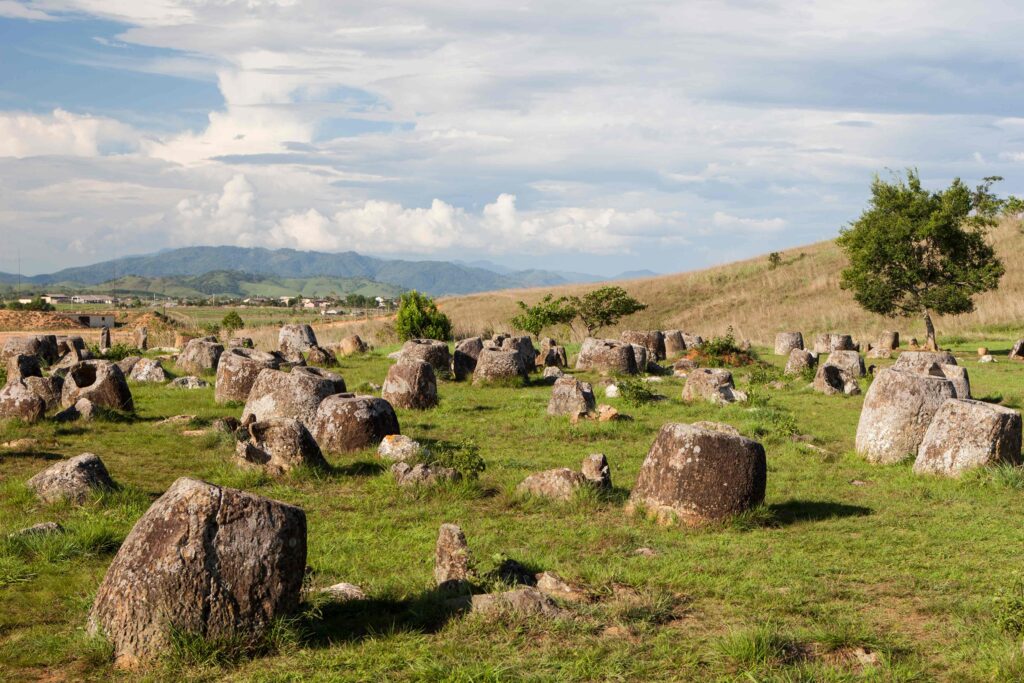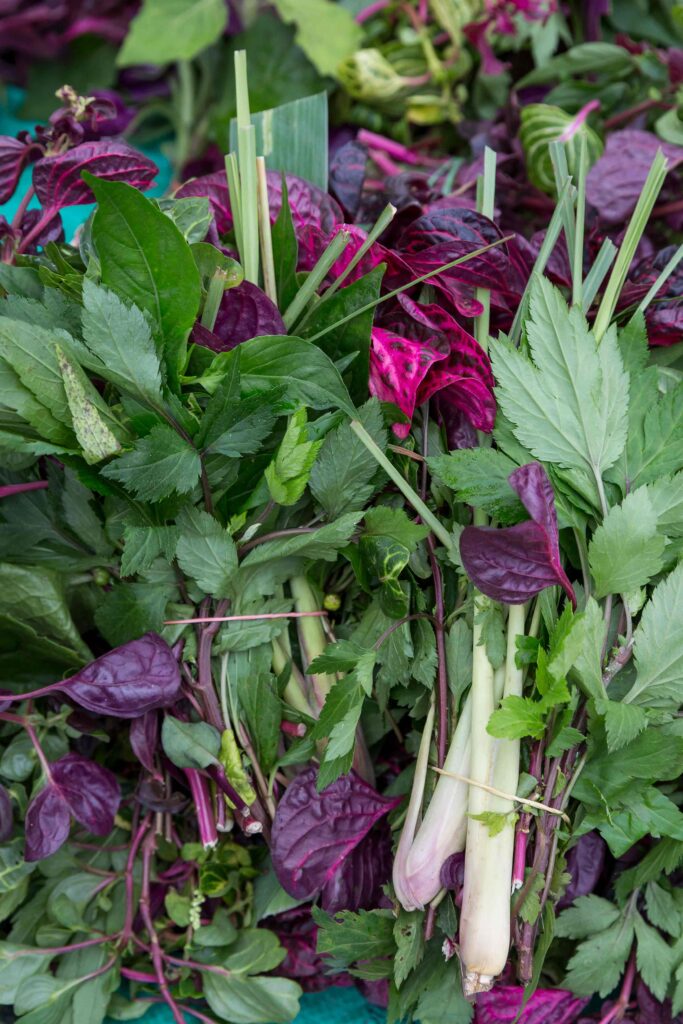ຄົ້ນພົບຄວາມມະຫັດສະຈັນດ້ານອາຫານ ແລະ ບູຮານຄະດີຂອງພາກພື້ນ,
ຊຽງຂວາງເປັນແຂວງໜຶ່ງທີ່ມີຄວາມມະຫັດສະຈັນທາງດ້ານປະຫວັດສາດ ແລະ ວັດທະນະທໍາທ້ອງຖິ່ນທີ່ໜ້າຄົ້ນຫາ ເລີ່ມແຕ່ຄວາມຈະເລີນຮຸ່ງເຮືອງໃນອະດີດຕະການຈົນເຖິງໂສກນາດຕະກໍາຂອງສົງຄາມຮຸກຮານ. ເຫດການດັ່ງກ່າວໄດ້ຖືກນໍາມາສະແດງຢ່າງພິຖີພິຖັນໃນຫໍພິພິທະພັນແຂວງ ແລະ ເຫດຜົນນີ້ເອງທີ່ທ່ານຄວນຫາໂອກາດເຂົ້າພັກພາຍໃນຕົວເມືອງແຫ່ງນີ້. ຫໍພິພິທະພັນແຂວງຊຽງຂວາງ ເຊິ່ງແນ່ນອນວ່າເປັນຫໍພິພິທະພັນທີ່ດີທີ່ສຸດໃນລາວກໍວ່າໄດ້, ເນື່ອງຈາກເປັນແຫຼ່ງສະໜອງດ້ານບໍລິບົດ ແລະ ຂໍ້ມູນສໍາຄັນ ທີ່ຈະຊ່ວຍໃຫ້ທ່ານໄດ້ຮັບປະໂຫຍດສູງສຸດຈາກການເດີນທາງຄັ້ງນີ້. ສິ່ງດັ່ງກ່າວບໍ່ພຽງແຕ່ຊ່ວຍທ່ານບັນລຸຄວາມສໍາເລັດຜ່ານການເກັບກໍາຂໍ້ມູນຂ່າວສານກ່ຽວກັບວັດຖຸບູຮານ ແລະ ແຜ່ນແພທີ່ຕໍ່າດ້ວຍມືເຊິ່ງໄດ້ຮວບຮວມໄວ້ຢ່າງສວຍງາມ ໂດຍມີລາຍລະອຽດຂໍ້ມູນທີ່ໄດ້ອະທິບາຍເປັນທັງພາສາລາວ ແລະ ພາສາອັງກິດ, ແຕ່ຍັງມີຮູບເງົາສັ້ນ 4 ເລື່ອງ, ໃນນັ້ນລວມມີຮູບເງົາໜຶ່ງເລື່ອງທີ່ໄດ້ສະແດງກ່ຽວກັບການຜ່າວົງປິດລ້ອມຂອງພວກສັດຕູ ໃນສະໄໝສົງຄາມລັບຂອງຈັກກະພັດອາເມລິກາ ລວມທັງລູກລະເບີດທີ່ຍັງບໍ່ທັນແຕກຕົກຄ້າງໂດຍມີຈໍານວນທີ່ໜ້າຕົກໃຈ ເຊິ່ງຍັງກະຈາຍໄປທົ່ວແຂວງ (ລາວຖືກຂະໜານນາມວ່າ ເປັນປະເທດທີ່ຖືກຖິ້ມລະເບີດຫຼາຍທີ່ສຸດໃນໂລກເມື່ອສະເລ່ຍຕໍ່ຫົວຄົນ ແລະ ມີລະເບີດລູກຫວ່ານຫຼາຍກວ່າ 2 ລ້ານໂຕນທີ່ນໍາມາຖິ້ມຖະຫຼົ່ມໃສ່ແຂວງຊຽງຂວາງ). ຫໍພິພິທະພັນແຫ່ງນີ້ຕັ້ງຢູ່ສີ່ແຍກຖະໜົນເລກ 30 ແລະ ຖະໜົນເລກ 9, ເປີດໃຫ້ບໍລິການວັນອັງຄານ ເຖິງວັນອາທິດ, ເວລາ 9:00 ໂມງເຊົ້າ ຫາ 4:00 ໂມງແລງ.
ເມື່ອທ່ານວາງແຜນອອກເດີນທາງສູ່ແຂວງຊຽງຂວາງ, ກໍຢ່າລືມວ່າ ເຖິງແຂວງດັ່ງກ່າວຈະມີສະຖານທີ່ທ່ອງທ່ຽວຫຼາຍແຫ່ງເຊິ່ງພຽງພໍທີ່ຈະຈ່ອງດຶງໃຫ້ນັກທ່ອງທ່ຽວພັກແຮມຄືນເປັນເວລາຫຼາຍວັນໄດ້, ແຕ່ສະຖານທີ່ທ່ອງທ່ຽວແຫ່ງຕ່າງໆກໍຢູ່ກະແຈກກະຈາຍກັນ ເຊິ່ງບາງແຫ່ງມີກໍານົດການເດີນທາງໄກເຖິງ 30 ກິໂລແມັດ. ດັ່ງນັ້ນ, ທ່ານຄວນຈັດກຽມຍານພາຫານະດ້ວຍຕົນເອງ (ມີລົດຈັກໃຫ້ເຊົ່າໃນຕົວເມືອງ) ຫຼື ຈໍາເປັນຕ້ອງມີພະນັກງານນໍາທ່ຽວພ້ອມຄົນຂັບລົດ.

ທົ່ງໄຫຫີນ
ເປັນເວລາເກືອບໜຶ່ງສັດຕະວັດແລ້ວ ທີ່ທ່ານ ມາເດເລນ ໂຄລານີ (Madeleine Colani), ນັກບູຮານຄະດີຊາວຝຣັ່ງ (ຊຸມປີ 1866 – 1943) ໄດ້ບຸກເບີກວຽກງານພາກສະໜາມ ແລະ ສົ່ງຜົນໃຫ້ເກີດມີເອກະສານສອງເຫຼັ້ມ ຊື່ “The Megaliths of Upper Laos” ໄດ້ນໍາເອົາເລື່ອງລາວຂອງທົ່ງໄຫຫີນໄປຈຸດປະກາຍຄວາມສົນໃຈຂອງຜູ້ຄົນທົ່ວໂລກ, ແຕ່ກໍຍັງຄົງເປັນປິດສະໜາເພື່ອລໍຖ້າຄໍາຕອບຈົນຮອດປັດຈຸບັນ. ເມື່ອຍ່າງຂຶ້ນໄປຕາມເນີນພູໃນຊ່ວງຕອນເຊົ້າທີ່ອາກາດກໍາລັງເຢັນ, ທ່ານຈະພົບເຫັນໄຫຫີນຂະໜາດໃຫຍ່ຫຼາຍໜ່ວຍທີ່ຖືກປົກຄຸມດ້ວຍໄຄນໍ້າ ເຊິ່ງບາງໜ່ວຍກໍຕັ້ງເດັ່ນສະຫງ່າ, ຂະນະທີ່ບາງໜ່ວຍກໍນອນເດຍລະດາດ ຫຼື ຖືກຮາກໄມ້ກ້ຽວກອດ ແຕ່ກໍເປັນເລື່ອງງ່າຍທີ່ຈະເຂົ້າໃຈໄດ້ວ່າຍ້ອນຫຍັງສະພາບຂອງພວກມັນຈິ່ງເປັນແບບນີ້. ໄຫຫີນຖືເປັນພາບທີ່ໜ້າສັງເກດ ແລະ ກະຕຸ້ນໃຫ້ເກີດຈິນຕະນາການໄປພ້ອມກັບຄວາມຄິດທີ່ວ່າ ຍ້ອນຫຍັງພາຊະນະທີ່ເຮັດດ້ວຍມືເຫຼົ່ານີ້ຈິ່ງຖືກສ້າງຂຶ້ນ ແລະ ສ້າງຂຶ້ນແບບໃດ. ມີນິທານພື້ນເມືອງບາງເລື່ອງກໍໄດ້ເລົ່າເຖິງກຸ່ມພວກຍັກທີ່ນໍາໃຊ້ໄຫຫີນເພື່ອບັນຈຸເຫຼົ້າຂາວ, ແຕ່ຜົນງານຂອງທ່ານ ໂຄລານີ ທີ່ໄດ້ສຶກສາໃນພື້ນທີ່ຍຸກສໍາລິດແຫ່ງນີ້ຊໍ້າພັດໄດ້ຂໍ້ສະຫຼຸບທີ່ຄີ່ຄາຍຫຼາຍຂຶ້ນ; ໂດຍຄາດວ່າ ໄຫຫີນເຫຼົ່ານີ້ຈະມີຄວາມກ່ຽວຂ້ອງກັບພິທີກໍາໃນການຝັງສົບຂອງຄົນບູຮານ. ຜົນງານການສຶກສາເພີ່ມເຕີມຂອງໂຄງການຄົ້ນຄວ້າບູຮານຄະດີ ໃນເຂດທົ່ງໄຫຫີນ ທີ່ໄດ້ດໍາເນີນການໃນຊ່ວງປີ 2016 ຫາ 2020 (ໂຄງການລິເລີ່ມການຄົ້ນຄວ້າຮ່ວມລະຫວ່າງ ອົດສະຕາລີ ແລະ ລາວ; plain-of-jars.org) ໄດ້ຄົ້ນພົບວັດຖຸບູຮານຈໍານວນຫຼາຍ ລວມທັງເສດເຄື່ອງປັ້ນດິນເຜົາ ແລະ ປະຫຼັກແຂນຈໍານວນໜຶ່ງ. ໄຫຫີນໄດ້ກະຈາຍຕາມບ່ອນຕ່າງໆລວມທັງໝົດ 91 ແຫ່ງ, ນັບແຕ່ໄຫດ່ຽວຈົນເຖິງເປັນກຸ່ມທີ່ມີຫຼາຍກວ່າ 200 ໜ່ວຍ ແຕ່ແຫ່ງທີ 1, 2 ແລະ 3 ເປັນເຂດທີ່ມີນັກທ່ອງທ່ຽວເຂົ້າໄປທ່ຽວຊົມຫຼາຍທີ່ສຸດ ແລະ ສາມາດເຂົ້າຊົມໄດ້ງ່າຍ.
ໃນການເດີນທາງ 1 ວັນເພື່ອມຸ່ງໜ້າໄປສູ່ທົ່ງໄຫຫີນທີ 1, ທ່ານຍັງສາມາດແວ່ສັກກາລະບູຊາພະພຸດທະຮູບອົງໃຫຍ່ທີ່ວັດໄຫຫີນ ມີໄຊຍາຣາມ, ໃນຂະນະທີ່ແຫຼ່ງໄຫຫີນທີ 2 ແລະ 3 ແມ່ນຕັ້ງຢູ່ບໍ່ໄກຈາກບ້ານນາເປຍ ນອກຈາກການເຮັດນາ ປະຊາຊົນທ້ອງຖິ່ນກໍສາມາດຫາລາຍໄດ້ເສີມດ້ວຍການຜະລິດບ່ວງຈາກກ່ອງລະເບີດ.

ເຂົ້າໄກ່ນ້ອຍ
ຊື່ສຽງຂອງແຂວງຊຽງຂວາງທີ່ຖືກກ່າວເຖິງອີກດ້ານໜຶ່ງນັ້ນກໍຄື ການປູກເຂົ້າທີ່ມີລາຄາແພງທີ່ສຸດຂອງປະເທດ, ເຊິ່ງເປັນແນວພັນເຂົ້າພື້ນເມືອງທີ່ເອີ້ນວ່າ “ເຂົ້າໄກ່ນ້ອຍ”. ເຂົ້າໜຽວເມັດສັ້ນໆພ້ອມກິ່ນຫອມຊວນຊີມນີ້ ເປັນຜະລິດຕະພັນທໍາອິດຂອງລາວທີ່ໄດ້ຮັບການຢັ້ງຢືນຖິ່ນກໍາເນີດ. ຮ້ານອາຫານ “ໂດຍຂະນ້ອຍ” ໃນນະຄອນຫຼວງວຽງຈັນ ໄດ້ປະສົບຄວາມສໍາເລັດໃນການຂຶ້ນທະບຽນເຂົ້າໄກ່ນ້ອຍກັບລາຍການ “Ark of Taste” ຂອງມູນນິທິສະໂລວ໌ຟູດສໍາລັບຊີວະນາໆພັນ ຫຼື ມູນນິທິອາຫານຊ້າສໍາລັບຊີວະນາໆພັນ (Slow Food Foundation for Biodiversity), ເປັນລາຍການອາຫານມໍລະດົກທາງວັດທະນະທໍາທີ່ໃກ້ຈະສູນພັນ ເຊິ່ງຕ້ອງໄດ້ມີການຜະລິດຢ່າງຍືນຍົງ, ມີລົດຊາດທີ່ເປັນເອກະລັກ ໂດຍເປັນສ່ວນໜຶ່ງຂອງຂົງເຂດນິເວດວິທະຍາທີ່ໂດດເດັ່ນ ແລະ ສົມຄວນໄດ້ຮັບການປົກປ້ອງ. ແນວພັນຍ່ອຍຂອງເຂົ້າໄກ່ນ້ອຍທີ່ນິຍົມປູກປະກອບມີ ເຂົ້າໄກ່ນ້ອຍເຫຼືອງ (ແນວພັນທີ່ນິຍົມປູກຫຼາຍກວ່າໝູ່), ເຂົ້າໄກ່ນ້ອຍດໍາ, ເຂົ້າໄກ່ນ້ອຍແດງ ແລະ ເຂົ້າໄກ່ນ້ອຍລາຍ. ສີຂອງເຂົ້າໄກ່ນ້ອຍແຕ່ລະແນວພັນແມ່ນເປັນສີຂອງເປືອກນອກບໍ່ແມ່ນສີຂອງເມັດດ້ານໃນ ເຊິ່ງແຕ່ລະແນວພັນລ້ວນແຕ່ຂຶ້ນຊື່ໃນເລື່ອງກິ່ນຫອມ, ຄວາມອ່ອນນຸ້ມ ແລະ ລົດຊາດທີ່ແຕກຕ່າງກັນ. ເຂົ້າຍັງມີລາຄາພິເສດ ແຕ່ກໍໜ້າເສຍດາຍທີ່ບໍ່ຄ່ອຍພົບເຫັນໃນເມນູອາຫານ. ນອກຈາກນີ້, ເຂົ້າໄກ່ນ້ອຍຍັງຖືກນໍາມາເຮັດເປັນເຂົ້າໜົມ, ເຫຼົ້າຂາວ ແລະ ໃຊ້ໃນການຜະລິດເບຍລາວໂກລນໍາອີກ.

ບ້ານຜະລິດເສັ້ນເຝີຊຽງຂວາງ
ເຂົ້າໄກ່ນ້ອຍຍັງເປັນເຂົ້າທີ່ນິຍົມເຮັດເສັ້ນເຝີນໍາອີກ. ສໍາລັບວັນອັນຄຸ້ມຄ່ານີ້, ໃຫ້ທ່ານຕື່ນນອນແຕ່ເຊົ້າ ແລ້ວອອກເດີນທາງດ້ວຍລົດໃນໄລຍະທາງ 25 ກິໂລແມັດ ເພື່ອມຸ່ງໜ້າໄປບ້ານນາອູ ບ່ອນທີ່ແຕ່ລະຄອບຄົວໄດ້ຜະລິດເສັ້ນເຝີແບບສົດໃໝ່ໄດ້ປະມານ 50-100 ກິໂລໃນແຕ່ລະວັນ. ຖ້າທ່ານຄິດຢາກຮູ້ຢາກເຫັນກ່ຽວກັບຂັ້ນຕອນການເຮັດເຝີຊຽງຂວາງ, ທ່ານຄວນຈະໄປຮອດບ້ານນາອູກ່ອນ 9 ໂມງເຊົ້າ. ເປັນສິ່ງທີ່ໜ້າສົນໃຈເປັນພິເສດທີ່ໄດ້ເຫັນແປ້ງເຂົ້າຈ້າວຂະນະເທລົງເທິງຜ້າແພທີ່ມັດຄຶງໄວ້ເທິງປາກໝໍ້ຕົ້ມນໍ້າທີ່ກໍາລັງຟົດ ຈາກນັ້ນຈິ່ງໃຊ້ກົ້ນໂອ (ໂອທີ່ຕັກແປ້ງເຂົ້າຈ້າວ) ກວາດໄປມາເພື່ອໃຫ້ແປ້ງກະຈາຍຈົນທົ່ວ ກ່ອນຈະປິດຝາໝໍ້ໄວ້ປະມານສອງສາມນາທີເພື່ອໜຶ້ງໃຫ້ສຸກ. ແຜ່ນເຝີຈະຖືກແກະອອກໃສ່ແຕະໄມ້ໄຜ່ ຈາກນັ້ນຈິ່ງນໍາໄປຕາກແດດໃຫ້ແຫ້ງກ່ອນຈະເອົາມາຊອຍຕາມຂະໜາດທີ່ຕ້ອງການ.
ຫ່າງຈາກບ້ານນາອູປະມານ 5 ກິໂລແມັດ ກໍແມ່ນເມືອງຄູນ ໂດຍທ່ານສາມາດທ່ຽວຊົມຊາກຫັກພັງຂອງວັດເພຍວັດ ເຊິ່ງວັດເກົ່າແກ່ແຫ່ງນີ້ສັນນິຖານວ່າຖືກສ້າງຂຶ້ນຕັ້ງແຕ່ຊ່ວງປີ 1564 ແຕ່ກໍຖືກທໍາລາຍບາງສ່ວນຈາກລະເບີດຂອງຈັກກະພັດອາເມລິກາໃນປີ 1966. ຢູ່ບໍລິເວນໃກ້ຄຽງວັດເພຍວັດ ກໍມີພະທາດ 2 ແຫ່ງທີ່ຕັ້ງຢູ່ເທິງຈອມພູ ພ້ອມກັບຊາກຫັກພັງໃນຍຸກອານານິຄົມຝຣັ່ງເສດ.

ຕົ້ມໄກ່ສະໝຸນໄພພື້ນເມືອງ
ຊຽງຂວາງມີຊົນເຜົ່າມົ້ງອາໄສຢູ່ເປັນຈໍານວນຫຼາຍ ແລະ ອິດທິພົນດ້ານອາຫານຂອງພວກເຂົາເຈົ້າສາມາດພົບເຫັນຕາມຕະຫຼາດແຫ່ງຕ່າງໆ. ຜູ້ທີ່ສົນໃຈຢາກລິ້ມລອງລົດຊາດຕົ້ມໄກ່ຂອງທ້ອງຖິ່ນ ຄວນຊອກຫາຕົ້ມໄກ່ສູດດັ້ງເດີມຂອງຊາວເຜົ່າມົ້ງທີ່ມີສ່ວນປະສົມຂອງສະໝຸນໄພຕ່າງໆ. ອາຫານຊະນິດນີ້ ຈັດໄດ້ວ່າເປັນຢາປົວພະຍາດນໍາອີກ ໂດຍໃຊ້ສະໝຸນໄພຫຼາຍສິບຊະນິດ ແລະ ຜັກປວຍເລ້ງຫຼາຍຊະນິດ ລວມທັງຈິງຈູສ່າຍ, ຕັງກຸຍ ແລະ ຜັກປັງ. ຊຽງຂວາງຍັງຂຶ້ນຊື່ໃນເລື່ອງໄສ້ກອກທີ່ມີລົດຊາດແຊບນໍາອີກ, ນອກນັ້ນກໍຍັງມີແຈ່ວ, ຊີ້ນແຫ້ງ ແລະ ຊີ້ນຢ້າງ ທີ່ຈໍາໜ່າຍໂດຍ ແມ່ສອນ ເຊິ່ງເປີດຮ້ານໃນຕອນບ່າຍຂອງທຸກໆວັນ ທີ່ເສັ້ນທາງເລກທີ 9 (ໂທ 020 9941 1510). ສໍາລັບຄໍກາເຟທັງຫຼາຍ, ຢ່າລືມພົກພາເມັດກາເຟຕິດໄມ້ຕິດມືໃນເວລາເດີນທາງກັບ ໂດຍສະເພາະກາເຟຂົ້ວດ້ວຍມືຈາກ Lone Buffalo ເຊິ່ງເປັນສະຫະກອນກາເຟສໍາລັບນັກຮຽນ ທີ່ສ້າງຂຶ້ນເພື່ອຊ່ວຍໃຫ້ໄວໜຸ່ມມີໂອກາດພັດທະນາທັກສະທາງທຸລະກິດຕົວຈິງ. ຂະນະທີ່ແບຣນ “Bombs to Beans” ຂອງ Lone Buffalo ແມ່ນມີຈໍາໜ່າຍຕາມຮ້ານຂາຍເຄື່ອງທົ່ວໄປຫຼາຍແຫ່ງພາຍໃນເມືອງ. www.lonebuffalo.org
ສາຍການບິນລາວ ໃຫ້ບໍລິການຖ້ຽວບິນໄປຊຽງຂວາງທຸກວັນໂດຍເດີນທາງຈາກນະຄອນຫລວງວຽງຈັນ
ແປ ແລະ ຮຽບຮຽງໂດຍ ໄພບູນ ທະນະບົວສີ
ຮູບໂດຍ Mick Shippen



 English
English
